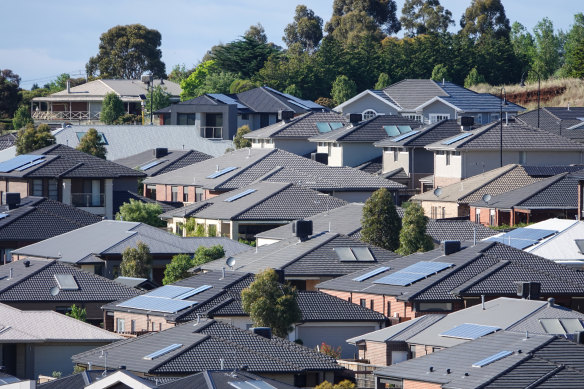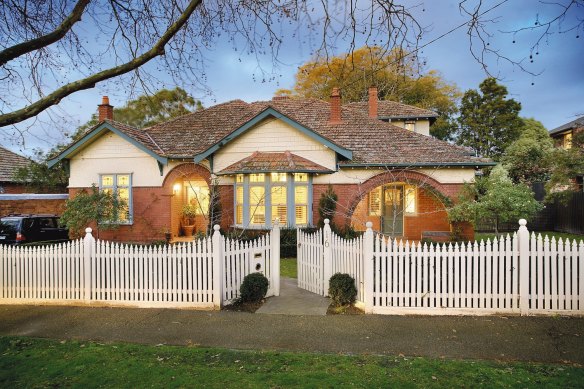This was published 3 years ago
Opinion
Date with density: Major parties ignore real cause of housing pain
By Joey Moloney and Brendan Coates
As both major parties make their final pre-election pitches on housing – shared equity from Labor, super for housing from the Coalition – neither side has shown much willingness to tackle the fundamental factors that are making housing less affordable.
The simple fact is we have not built enough housing to meet the needs of Australia’s growing population. Among developed countries, Australia has had the second-biggest decline in housing stock relative to the adult population over the past 20 years.

Australia is not building enough of the type of housing people want.Credit: Paul Rovere
Our cities offer too little medium-density housing in their inner and middle rings. Australian capital cities are more sparsely populated than cities of similar size in other developed economies.
This is not what most Australians want. It is a myth that all new first-home buyers want a quarter-acre block. Many would prefer a townhouse, semi-detached dwelling, or apartment in an inner or middle suburb, rather than a house on the city fringe.
The stock of smaller dwellings – townhouses, apartments, etc – made up 44 per cent of Sydney’s houses in 2016, and 33 per cent of Melbourne’s. Yet, Australians say they actually want those numbers to be 59 per cent in Sydney and 52 per cent in Melbourne.
This is a failure of housing policy, not housing markets. Many states and local governments restrict medium - and high-density developments to appease local residents concerned about road congestion, parking problems, and damage to neighbourhood character. The barriers vary from state to state, but the effect is the same – fewer houses where people want to live and work.

It is a myth that all new first-home buyers want a quarter-acre block.Credit: Danny Smith
The politics of land-use planning – what gets built and where – favour those who oppose change. Most suburbs have more homeowners than renters. Existing residents usually prefer their suburb to stay the same and worry that more development will mean more traffic congestion, more crowding on public transport, more noise, and less “street appeal”.
Meanwhile, prospective residents who don’t already live in these suburbs cannot vote in council elections, and so their interests are largely unrepresented.
It’s a failure with big economic consequences. Recent US studies estimate that GDP would be between 2 per cent and 13 per cent higher if enough housing had been built in cities with strong jobs growth such as New York and San Francisco. These effects would be smaller in Australia because most of us live in one of the five largest cities, but it’s still a huge hit to our living standards.
The states, rather than the national government, have constitutional responsibility for land-use planning. The states set the planning framework, and they govern local councils that assess most development applications.
But the federal government can and should help to boost the supply of housing.
Fixing land-use planning is politically hard for state governments because many residents don’t want more housing where they live. The federal government should make it worth the states’ while to do so by paying them to relax their land-use planning systems and allow more housing to be built.
The federal government could set targets for new housing construction, and pay the states for each house built above a baseline. A new federal statutory authority, Housing Australia, could keep score.
There’s plenty of precedent. Under the National Competition Policy, the federal government paid the states nearly $6 billion over 10 years in exchange for much-needed regulatory and competition reform. The Productivity Commission later concluded that the benefits of the policy massively outweighed the costs.
A similar approach today could help solve Australia’s housing affordability crisis and also boost Australia’s lagging rate of productivity growth. Future federal governments would reap a fiscal dividend via higher tax revenues that would flow from higher economic growth as we build more homes close to jobs.
A sustained increase in housing supply would have a big impact on house prices in the long term. For example, if an extra 50,000 homes were built each year for the next decade, national house prices and rents could be 10-to- 20 per cent lower than they would be otherwise.
Building more homes won’t fix everything. There will still need to be more support for low-income households. And housing tax reforms such as limiting negative gearing and reducing the capital gains tax discount would make housing more affordable while also helping government budgets and the economy.
But without more supply to reduce the gap between what housing costs and what households can afford to pay, we will struggle to make housing more affordable for anyone, let alone the poorest Australians.
And if not, there’s always the 2025 federal election campaign.